
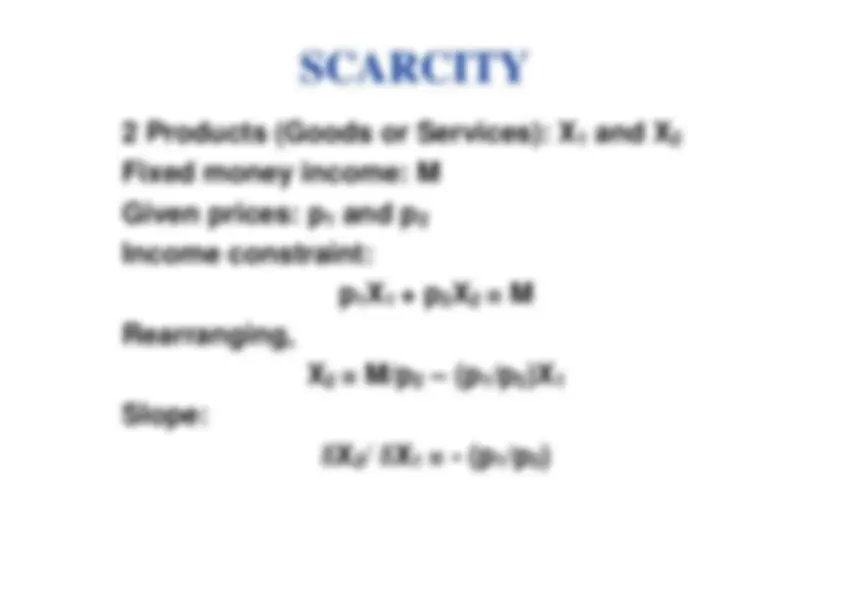
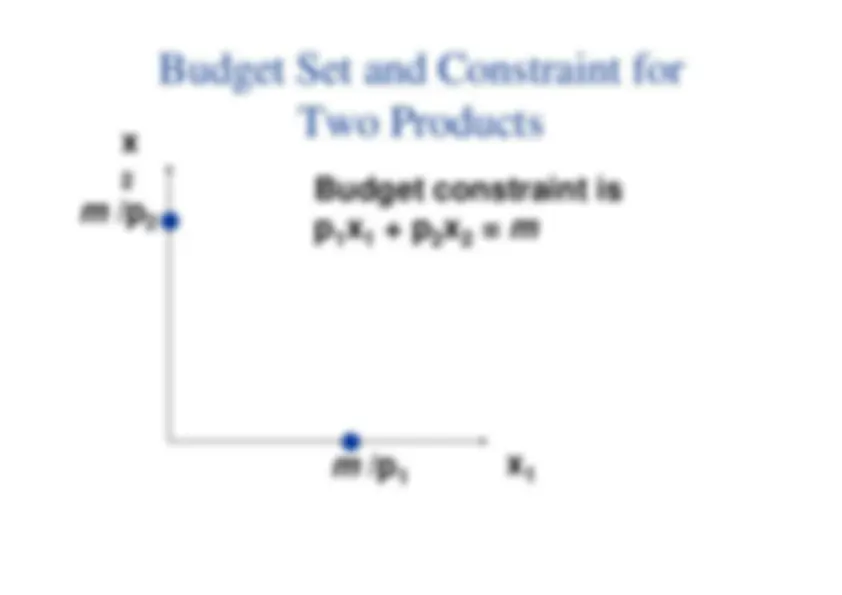
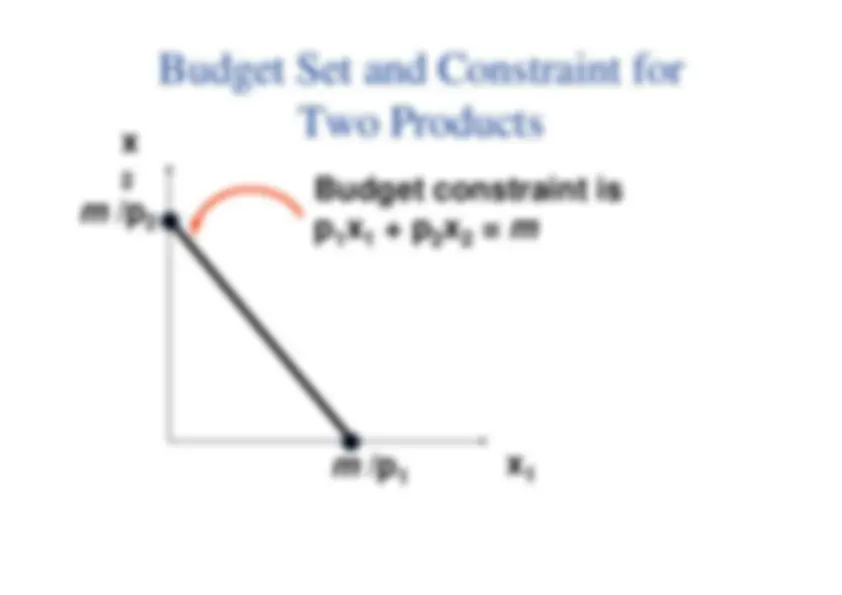
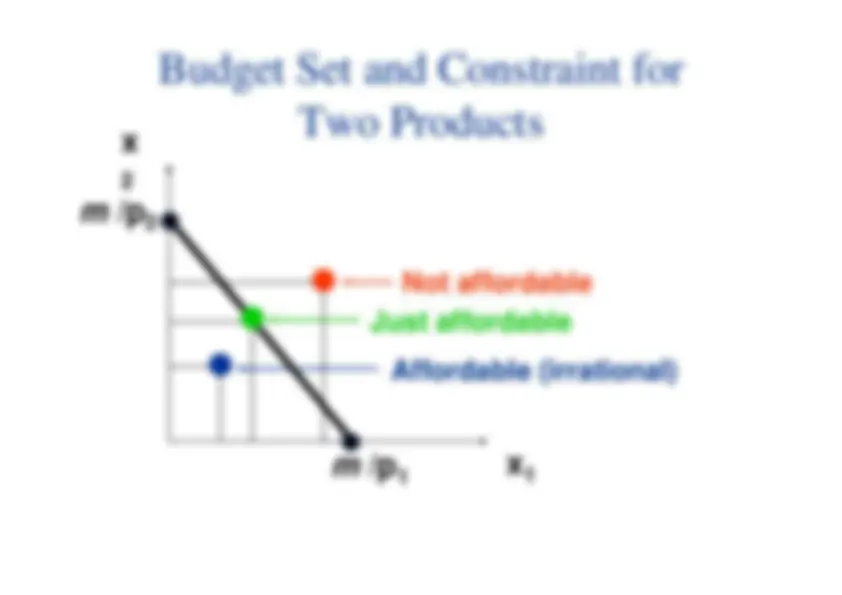
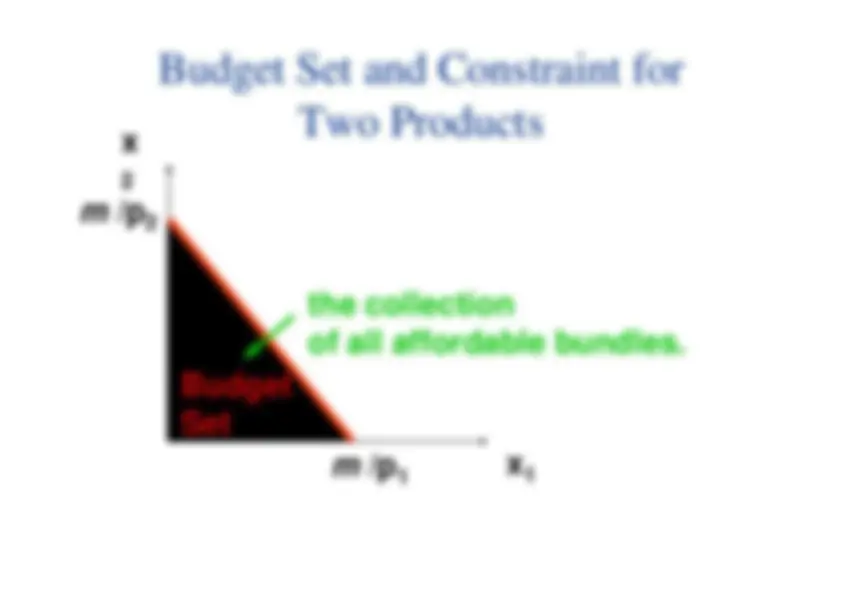
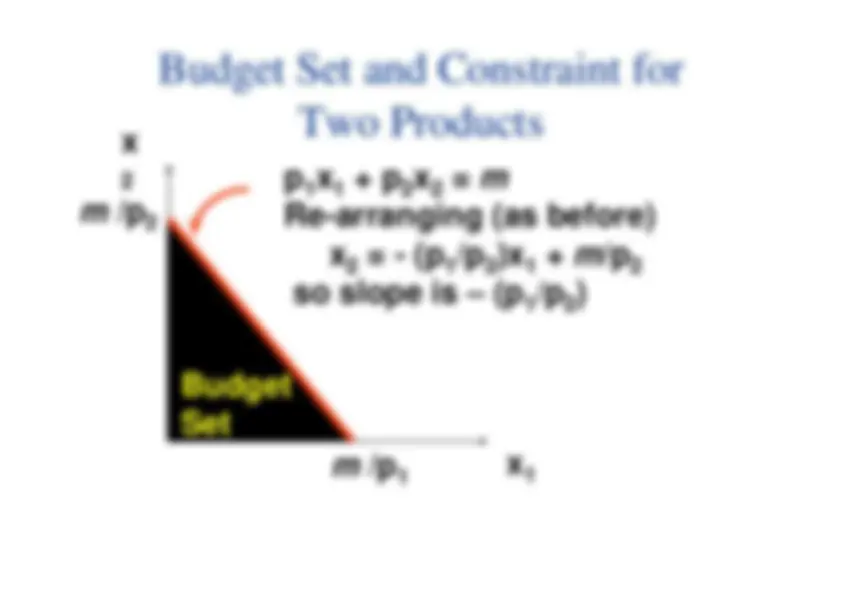
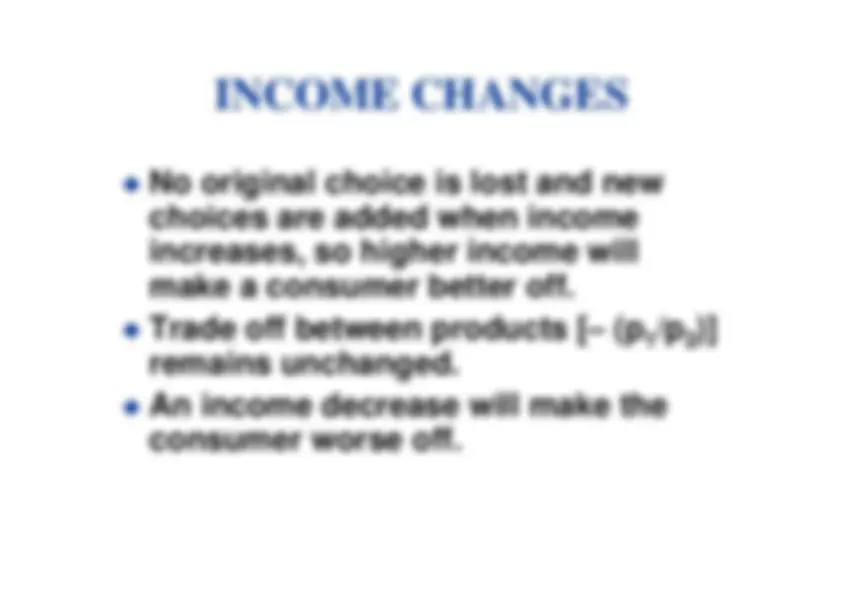
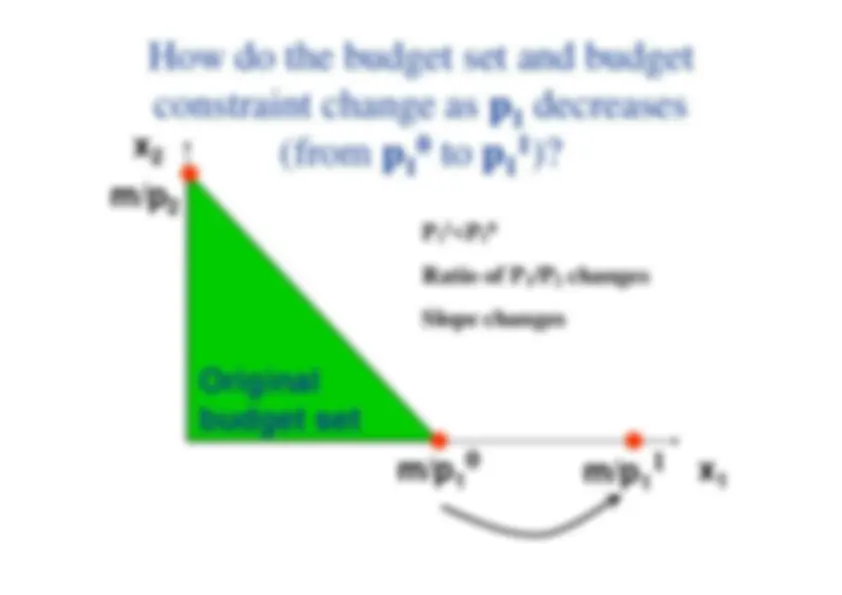
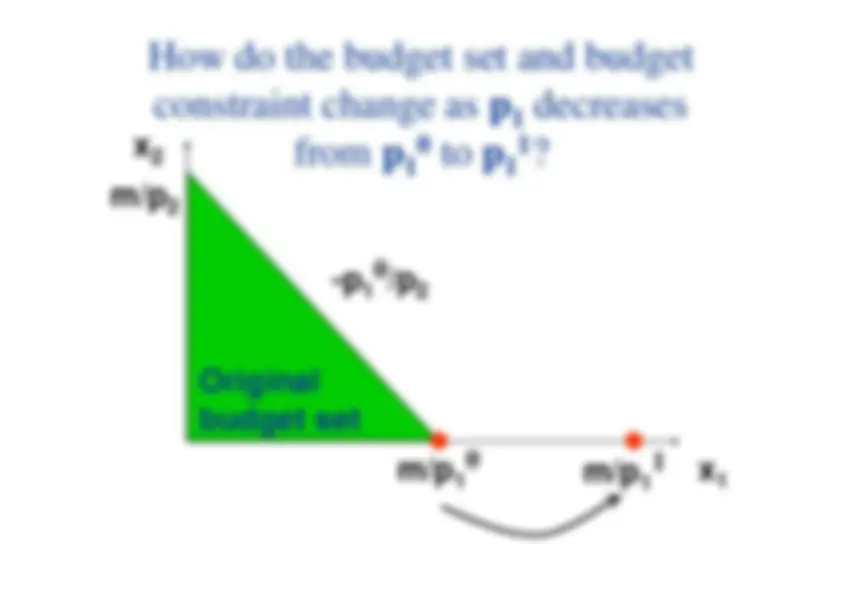
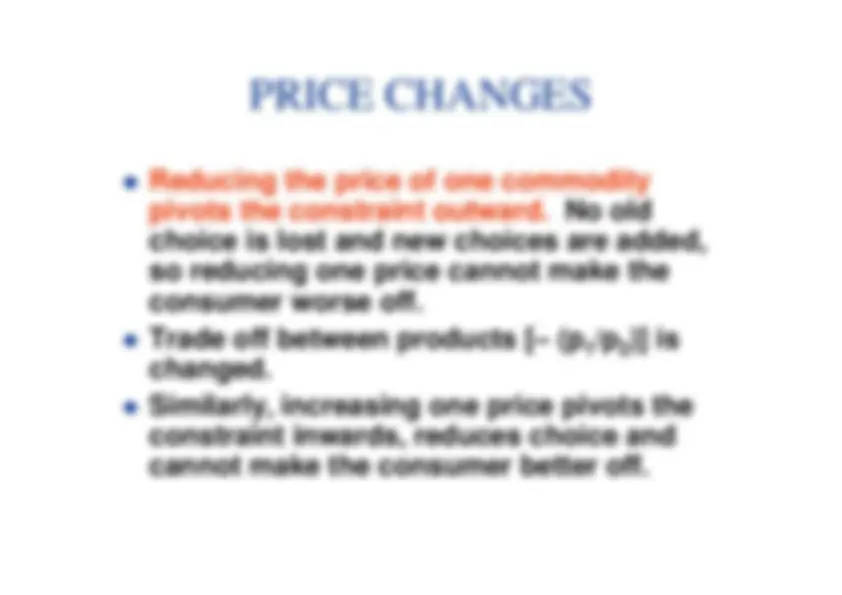
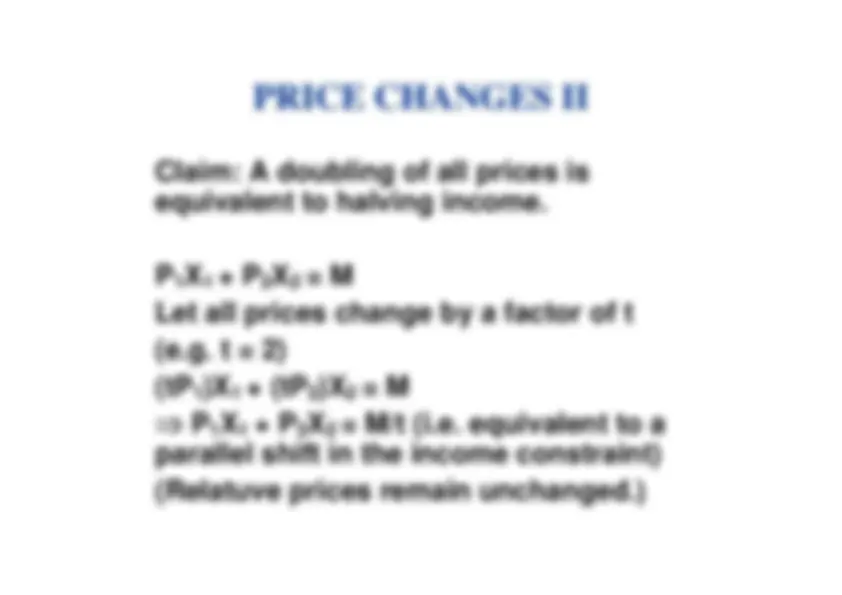
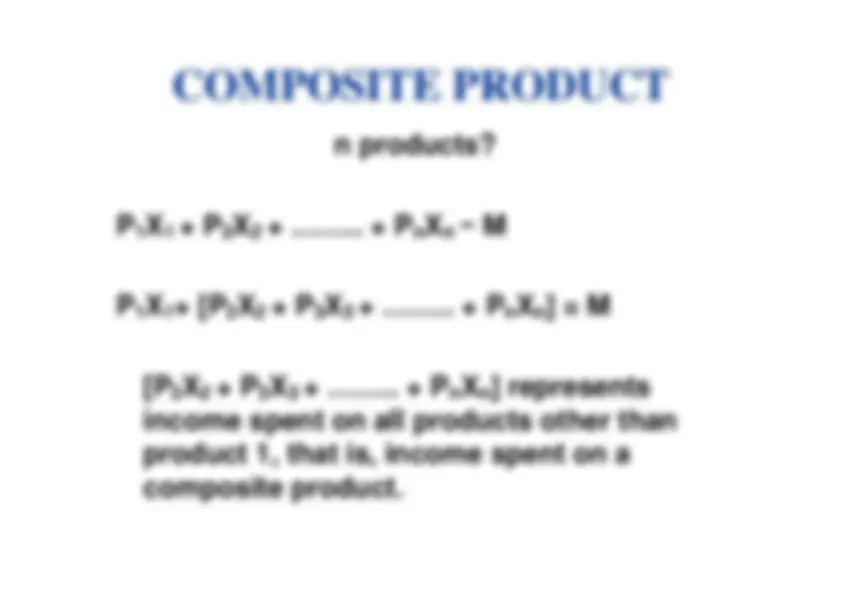
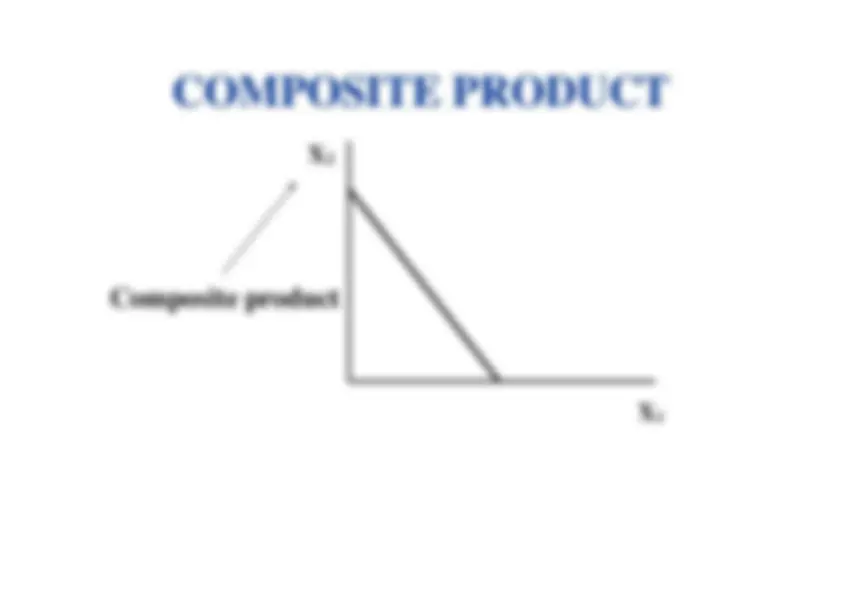
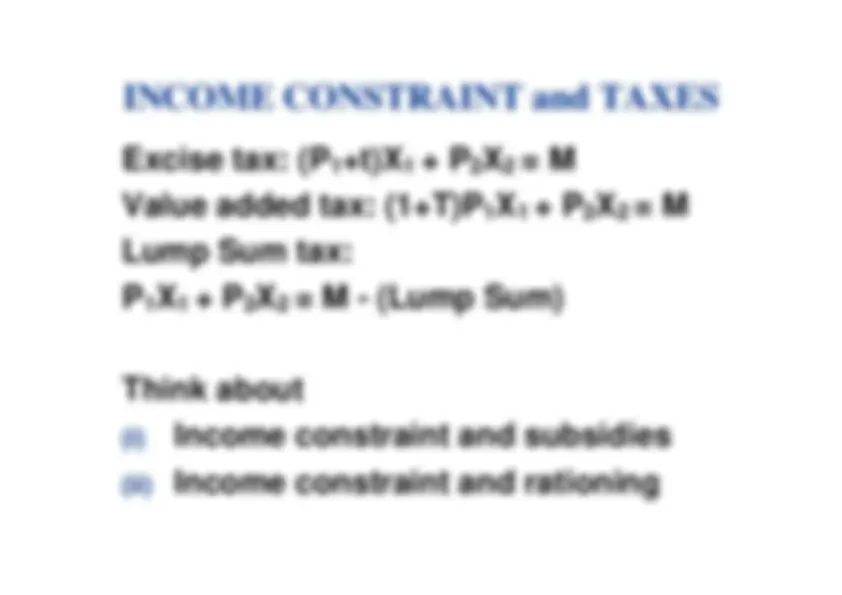


Study with the several resources on Docsity

Earn points by helping other students or get them with a premium plan


Prepare for your exams
Study with the several resources on Docsity

Earn points to download
Earn points by helping other students or get them with a premium plan
Community
Ask the community for help and clear up your study doubts
Discover the best universities in your country according to Docsity users
Free resources
Download our free guides on studying techniques, anxiety management strategies, and thesis advice from Docsity tutors
Budget Constraint. X2. M/p2. p1X1+p2X2 = M. 2. p1X1+p2X2 M. Slope ... Budget Set. X1. The slope of the income constraint represents society's willingness to.
Typology: Exercises
1 / 22

This page cannot be seen from the preview
Don't miss anything!















We will look at1.^ Scarcity: income and prices2.^ Tastes 3 Combine scarcity and tastes3.^ Combine scarcity and tastes(i) Individual demand( ) (ii) Market demand
Budget constraint isp x^ + p x
=^ m m^ /p^2
p^ x+ p^ x^1 1
=^ m 2 x m /p 11
Budget constraint isp x^ + p x
=^ m p^ x+ p^ x^1 1
=^ m 2 x m /p 11
Not affordableAff^ d bl^ (i
ti^ l) Just affordableAffordable (irrational)x
1 m^ /p^1
x+ p^ x 1 1 2 2
=^ m Re-arranging (as before) m^ /p^2
g^ g (^
x= - (p^ /p^2
)x+^ m /p 2 1
2 so slope is – (p
/p^ ) 1 2 so slope is
(p^ /p^ )^1 BudgetSet
x^1 m^ /p^1 Set
M/pX 2 2^ p
X+pX= M 1122 2
p^ X^ 1X1+p^22
SlopeSlope^ X^ /^ X^ = - (p^2
/p^ ) 1 2 M/p^1 Budget Set
X^1
The slope of the income constraint represents society’s willingness top^
p^ y
g
trade; to increase consumption of product 1 by 1 unit, an individualmust decrease consumption of product 2 by P
/Punits^12.
“ OPPPORTUNITY COST
”
^ No original choice is lost and newchoices are added when incomeincreases, so higher income willmake a consumer better off. ^ Trade off between products [– (p
/p^ )] 1 2
remains unchangedremains unchanged. An income decrease will make the
ff consumer worse off.
How do the budget set and budgett^ i t
h^
d constraint change as
p^ decreases^1 (^0) (from p 1 1 to^ p^ )?^1 x^2
(from^ p^1
to^ p )?^1 (^2) m/p^2
(^101 0) P <P^ P<P (^11) Ratio of P/P^1 changes Slope changes Originalbudget setg
x^1 (^0) m/p 1
(^1) m/p 1
How do the budget set and budgett^ i t
h^
d constraint change as
p^ decreases^1 (^0) from p 1 (^1) to p? 1 x^2
from^ p^1
to^ p?^1 (^2) m/p^2 New affordable choices^00 p^ /p-p^ /p^1
(^2) Originalbudget setg
x^1 (^0) m/p 1
(^1) m/p 1
How do the budget set and budgett^ i t
h^
d constraint change as
p^ decreases^1 (^0) from p 1 (^1) to p? x^2
from^ p^1
to^ p^? (^2) m/p^2 New affordable choices
Budget constrainti t^ l^
fl tt (^0) p /p^
pivots; slope flattensfrom -p
(^0) /pto 12 (^0) -p /p^12 Originalbudget set
(^1) -p/p 12 (^1) -p /p^12 g
x^1 (^0) m/p 1
(^1) m/p 1
f^ ll^ i^
i Claim: A doubling of all prices isequivalent to halving income.PX+ PX^1 1 2
= M Let all prices change by a factor of t(e.g. t = 2)(tP)X+ (tP^1
)X= M 2 2 ^ PX+ P^1
X= M/t (i.e. equivalent to a 2 2 ^ PXP^1
XM/t (i.e. equivalent to a 2 2 parallel shift in the income constraint)(Relatuve prices remain unchanged.)(Relatuve prices remain unchanged.)
PX+ PX^1 1 2
+^ + P
X= Mnn^ PX+ PX^1 1 2
XMnn^ P X^ [P X^
P X^
P X ]^ M PX+ [PX^1 1 2
X] = Mnn [PX+ PX^2 2
X] representsnn income spent on all products other thanp^
p product 1, that is, income spent on acomposite product.p^
p